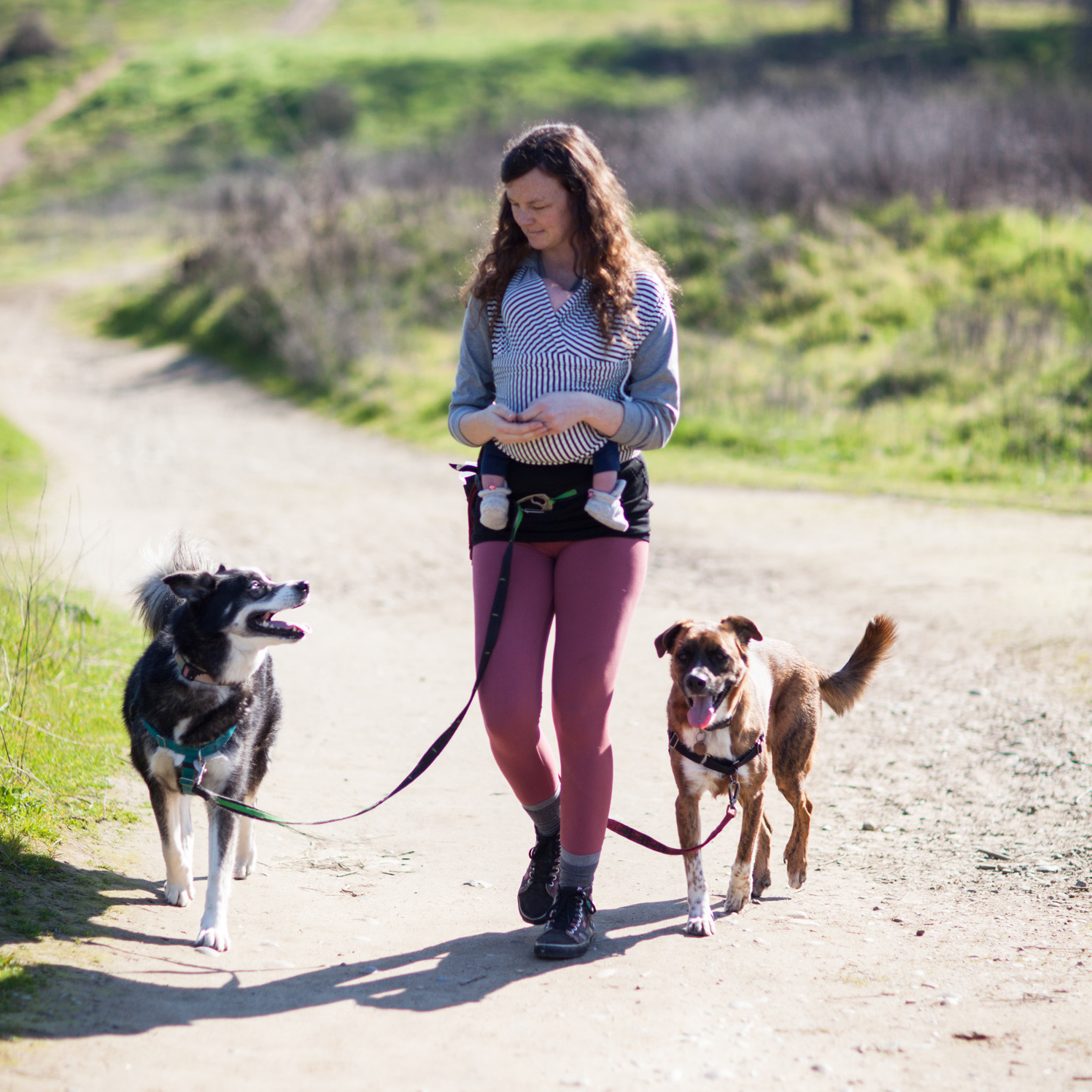The first few car trips I took with Wiley felt like a really big deal. Everything was a “first” which was exciting, and a little nerve wracking. Figuring out how to properly strap him into his car seat, waiting with baited breath to see how he felt about car rides (not a fan of the car seat itself but quickly soothed by the motion of the car, in case you were wondering), making sure he’s warm and cozy, figuring out what I need to keep in the diaper bag… Whew!
Adding dogs on top of all is even more to think about! And to be honest, many people don’t think about it much at all - the dog is stuck in the back with the baby, and that’s that. But that may not be the best or safest idea!
Do you remember our discussion on grumble and growl zones? The backseat of the car fits right into those categories! Think about it - tight space, no opportunity to exit. This can easily be a recipe for discomfort, especially when the baby in question gets more mobile and starts experimenting with using those fascinating limbs and pinchy fingers. Even for a dog that’s not uncomfortable around the squirmy new critter, a loose dog in the back seat also presents some accidental injury risk from trampling or stumbling or something really interesting appearing outside of the baby's window!
Luckily, there are plenty of options for safe set ups, so let’s talk about a few:
Crate
For a dog that has been conditioned to enjoy crate time, and a large vehicle, installing a travel crate can be a great option, especially in the far back. This gives the pooch their own, impenetrable safe space and prevents any stumbles or stepping on babe.
Seatbelt/restraint
A dog seatbelt or restraint can be great in a roomy vehicle where the pup can be restrained in his or her own area - like the hatchback space or an empty seat row. This is not a good option in a space where a baby or child has access to the dog - talk about no escape! But it can work great if there’s plenty of space and we just need to make sure Fido stick to his designated area. The dog could even be restrained in the passenger seat if the little one is taking up the only back seat area.
Install a barrier
There are many barriers you can purchase to install in your car to create separate spaces. Similar to a restraint, these keep the dog in her own area, but are a little less restrictive, so some dogs may prefer them. This may work better for a puppy, or dogs prone to chewing.
Parent in between
Yup, I’m saying it again! Dog and baby on the scene, parent in between! This Family Paws saying can also work if multiple adults are going on this car ride, especially with a smaller dog. Seating an adult between the children and dogs can work to create a nice buffer, especially in cases where we’re not concerned about a large or young dog’s exuberance being an issue.
Camper shell
A dog should NEVER ride in the open bed of a truck - it’s simply not safe. However, with a camper shell safely installed, it can be possible to create a comfy resting space for a dog in a truck bed that’s separate from where the kiddos are riding. This is a less safe option in terms of collision risk, but good for mitigating dog/child risks.
Have you experimented with any of these options? What worked best for your family?

